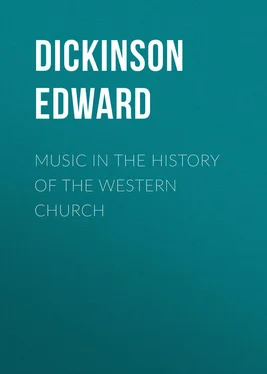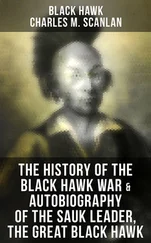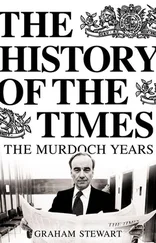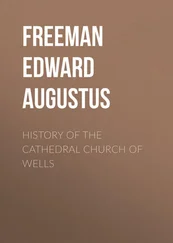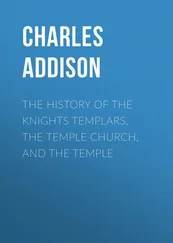Edward Dickinson - Music in the History of the Western Church
Здесь есть возможность читать онлайн «Edward Dickinson - Music in the History of the Western Church» — ознакомительный отрывок электронной книги совершенно бесплатно, а после прочтения отрывка купить полную версию. В некоторых случаях можно слушать аудио, скачать через торрент в формате fb2 и присутствует краткое содержание. Жанр: foreign_antique, foreign_prose, на английском языке. Описание произведения, (предисловие) а так же отзывы посетителей доступны на портале библиотеки ЛибКат.
- Название:Music in the History of the Western Church
- Автор:
- Жанр:
- Год:неизвестен
- ISBN:нет данных
- Рейтинг книги:4 / 5. Голосов: 1
-
Избранное:Добавить в избранное
- Отзывы:
-
Ваша оценка:
- 80
- 1
- 2
- 3
- 4
- 5
Music in the History of the Western Church: краткое содержание, описание и аннотация
Предлагаем к чтению аннотацию, описание, краткое содержание или предисловие (зависит от того, что написал сам автор книги «Music in the History of the Western Church»). Если вы не нашли необходимую информацию о книге — напишите в комментариях, мы постараемся отыскать её.
Music in the History of the Western Church — читать онлайн ознакомительный отрывок
Ниже представлен текст книги, разбитый по страницам. Система сохранения места последней прочитанной страницы, позволяет с удобством читать онлайн бесплатно книгу «Music in the History of the Western Church», без необходимости каждый раз заново искать на чём Вы остановились. Поставьте закладку, и сможете в любой момент перейти на страницу, на которой закончили чтение.
Интервал:
Закладка:
Not at once, however, could musical art spring up full grown and responsive to these novel demands. An art, to come to perfection, requires more than a motive. The motive, the vision, the emotion yearning to realize itself, may be there, but beyond this is the mastery of material and form, and such mastery is of slow and tedious growth. Especially is this true in respect to the art of music; musical forms, having no models in nature like painting and sculpture, no associative symbolism like poetry, no guidance from considerations of utility like architecture, must be the result, so far as any human work can be such, of actual free creation. And yet this creation is a progressive creation; its forms evolve from forms preëxisting as demands for expression arise to which the old are inadequate. Models must be found, but in the nature of the case the art can never go outside of itself for its suggestion. And although Christian music must be a development and not the sudden product of an exceptional inspiration, yet we must not suppose that the early Church was compelled to work out its melodies from those crude elements in which anthropology discovers the first stage of musical progress in primitive man. The Christian fathers, like the founders of every historic system of religious music, drew their suggestion and perhaps some of their actual material from both religious and secular sources. The principle of ancient music, to which the early Christian music conformed, was that of the subordination of music to poetry and the dance-figure. Harmony was virtually unknown in antiquity, and without a knowledge of part-writing no independent art of music is possible. The song of antiquity was the most restricted of all melodic styles, viz. , the chant or recitative. The essential feature of both chant and recitative is that the tones are made to conform to the metre and accent of the text, the words of which are never repeated or prosodically modified out of deference to melodic phrases and periods. In true song, on the contrary, the words are subordinated to the exigencies of musical laws of structure, and the musical phrase, not the word, is the ruling power. The principle adopted by the Christian fathers was that of the chant, and Christian music could not begin to move in the direction of modern artistic attainment until, in the course of time, a new technical principle, and a new conception of the relation between music and poetry, could be introduced.
In theory, style, usage, and probably to some extent in actual melodies also, the music of the primitive Church forms an unbroken line with the music of pre-Christian antiquity. The relative proportion contributed by Jewish and Greek musical practice cannot be known. There was at the beginning no formal break with the ancient Jewish Church; the disciples assembled regularly in the temple for devotional exercises; worship in their private gatherings was modelled upon that of the synagogue which Christ himself had implicitly sanctioned. The synagogical code was modified by the Christians by the introduction of the eucharistic service, the Lord’s Prayer, the baptismal formula, and other institutions occasioned by the new doctrines and the “spiritual gifts.” At Christ’s last supper with his disciples, when the chief liturgical rite of the Church was instituted, the company sang a hymn which was unquestionably the “great Hallel” of the Jewish Passover celebration. 29 29 Ps. cxiii-cxviii.
The Jewish Christians clung with an inherited reverence to the venerable forms of their fathers’ worship; they observed the Sabbath, the three daily hours of prayer, and much of the Mosaic ritual. In respect to musical usages, the most distinct intimation in early records of the continuation of ancient forms is found in the occasional reference to the habit of antiphonal or responsive chanting of the psalms. Fixed forms of prayer were also used in the apostolic Church, which were to a considerable extent modelled upon the psalms and the benedictions of the synagogue ritual. That the Hebrew melodies were borrowed at the same time cannot be demonstrated, but it may be assumed as a necessary inference.
With the spread of the Gospel among the Gentiles, the increasing hostility between Christians and Jews, the dismemberment of the Jewish nationality, and the overthrow of Jewish institutions to which the Hebrew Christians had maintained a certain degree of attachment, dependence upon the Jewish ritual was loosened, and the worship of the Church came under the influence of Hellenic systems and traditions. Greek philosophy and Greek art, although both in decadence, were dominant in the intellectual life of the East, and it was impossible that the doctrine, worship, and government of the Church should not be gradually leavened by them. St. Paul wrote in the Greek language; the earliest liturgies are in Greek. The sentiment of prayer and praise was, of course, Hebraic; the psalms formed the basis of all lyric expression, and the hymns and liturgies were to a large extent colored by their phraseology and spirit. The shapeliness and flexibility of Greek art, the inward fervor of Hebrew aspiration, the love of ceremonial and symbolism, which was not confined to any single nation but was a universal characteristic of the time, all contributed to build up the composite and imposing structure of the later worship of the Eastern and Western churches.
The singing of psalms formed a part of the Christian worship from the beginning, and certain special psalms were early appointed for particular days and occasions. At what time hymns of contemporary origin were added we have no means of knowing. Evidently during the life of St. Paul, for we find him encouraging the Ephesians and Colossians to the use of “psalms, hymns, and spiritual songs.” 30 30 Eph. v. 19; Col. iii. 16.
To be sure he is not specifically alluding to public worship in these exhortations (in the first instance “speaking to yourselves” and “singing and making melody in your hearts,” in the second “teaching and admonishing one another”), but it is hardly to be supposed that the spiritual exercise of which he speaks would be excluded from the religious services which at that time were of daily observance. The injunction to teach and admonish by means of songs also agrees with other evidences that a prime motive for hymn singing in many of the churches was instruction in the doctrines of the faith. It would appear that among the early Christians, as with the Greeks and other ancient nations, moral precepts and instruction in religious mysteries were often thrown into poetic and musical form, as, being by this means more impressive and more easily remembered.
It is to be noticed that St. Paul, in each of the passages cited above, alludes to religious songs under three distinct terms, viz. : ψαλμοί, ὕμνοι, and ᾠδαὶ πνευματικαί. The usual supposition is that the terms are not synonymous, that they refer to a threefold classification of the songs of the early Church into: 1, the ancient Hebrew psalms properly so called; 2, hymns taken from the Old Testament and not included in the psalter and since called canticles, such as the thanksgiving of Hannah, the song of Moses, the Psalm of the Three Children from the continuation of the Book of Daniel, the vision of Habakkuk, etc.; and, 3, songs composed by the Christians themselves. The last of these three classes points us to the birth time of Christian hymnody. The lyric inspiration, which has never failed from that day to this, began to move the instant the proselyting work of the Church began. In the freedom and informality of the religious assembly as it existed among the Hellenic Christians, it became the practice for the believers to contribute impassioned outbursts, which might be called songs in a rudimentary state. In moments of highly charged devotional ecstasy this spontaneous utterance took the form of broken, incoherent, unintelligible ejaculations, probably in cadenced, half-rhythmic tone, expressive of rapture and mystical illumination. This was the “glossolalia,” or “gift of tongues” alluded to by St. Paul in the first epistle to the Corinthians as a practice to be approved, under certain limitations, as edifying to the believers. 31 31 1 Cor. xii. and xiv.
Интервал:
Закладка:
Похожие книги на «Music in the History of the Western Church»
Представляем Вашему вниманию похожие книги на «Music in the History of the Western Church» списком для выбора. Мы отобрали схожую по названию и смыслу литературу в надежде предоставить читателям больше вариантов отыскать новые, интересные, ещё непрочитанные произведения.
Обсуждение, отзывы о книге «Music in the History of the Western Church» и просто собственные мнения читателей. Оставьте ваши комментарии, напишите, что Вы думаете о произведении, его смысле или главных героях. Укажите что конкретно понравилось, а что нет, и почему Вы так считаете.
